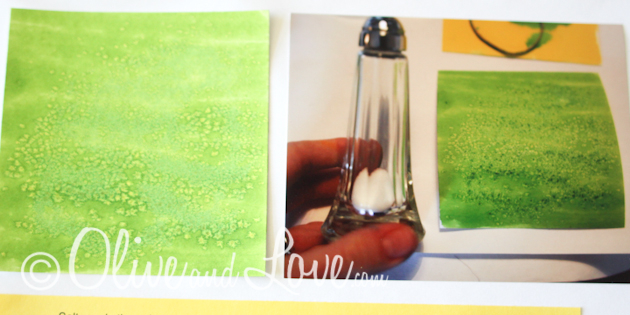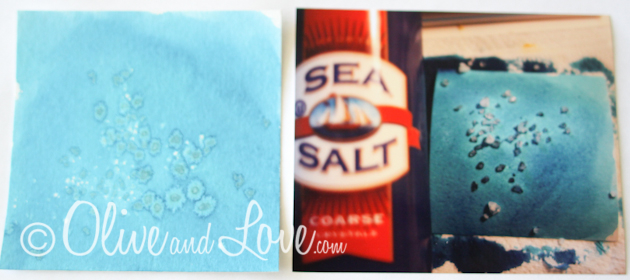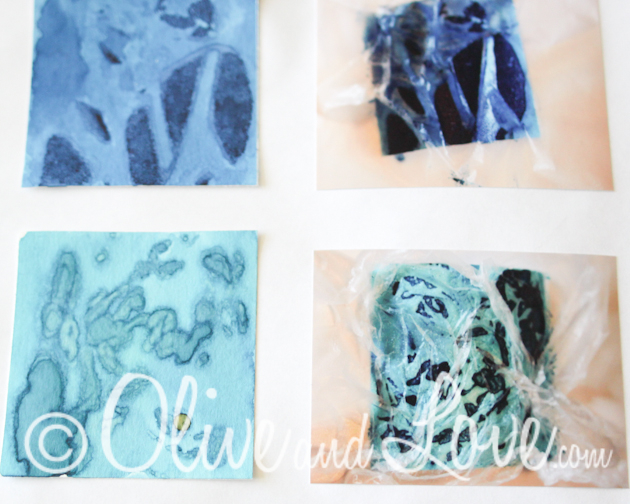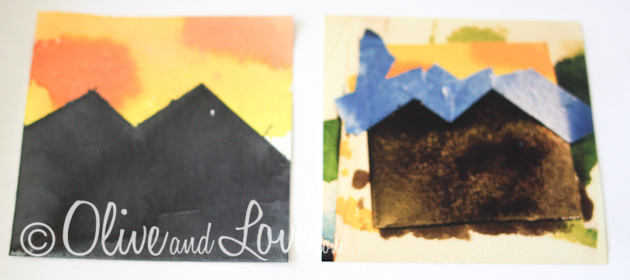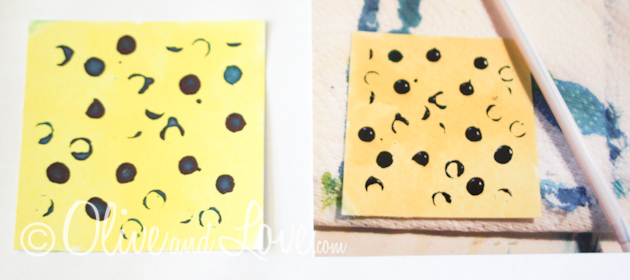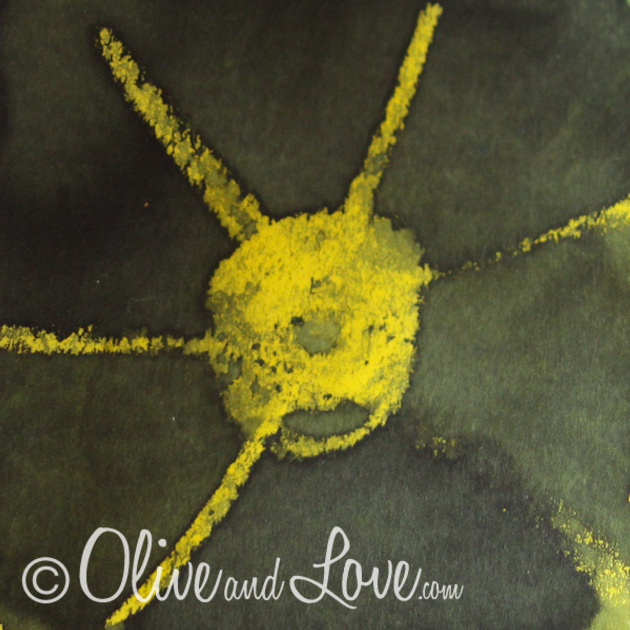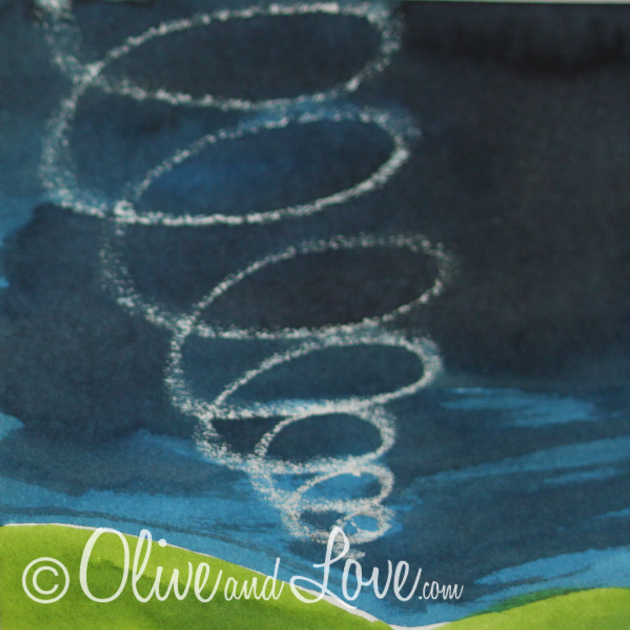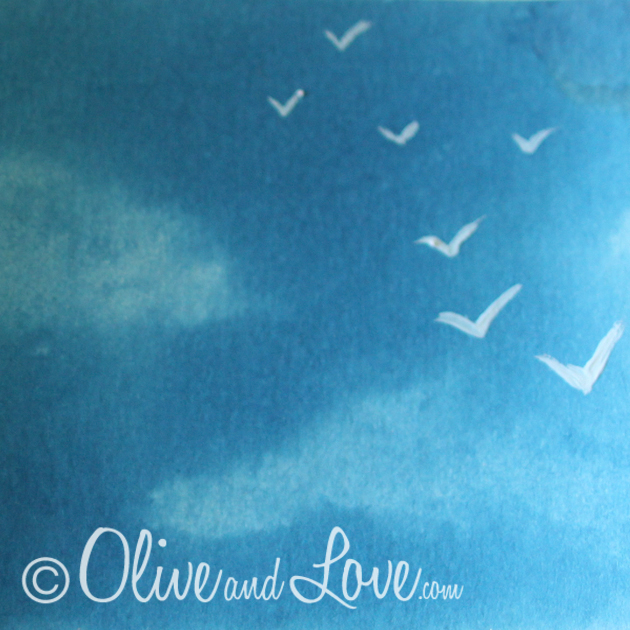Watercolor Tricks & Techniques
>
Rubber bands, thread, string and yarn can create free form effects on your paper. These rubber bands were dipped in the watercolor and were allowed to dry on the paper before they were removed.
Try stamping or printing with watercolor in a drinking straw. The watercolor will fill the end of the straw to create a filled circle when stamped. Tap the straw first (before stamping) to create the outline of a circle.
This paper was first painted yellow. Wax was then used to draw a sun which resisted the final black wash that covered the paper.
Spirals were drawn in these two pictures using a wax candle, then a wash was applied over the paper.
Jupiter was created using yellow paint with plastic wrap. Once dry, a red spot was added and allowed to dry. Wax drawn in a circle shape covered the planet while black watercolor filled the sky and was swept across the planet.
This storm scene is a combination of the wire brush, wax zig zag and a tissue to blot the cloud.
White watercolor was splattered on top of a wet orange wash. Once dry, a yellow watercolor paint was brushed over the top.
Making these sample watercolors was eye opening. There are so many techniques that I would have never thought about using without the suggestions from a watercolor book. Go check one out at your library and browse through it. Google 'rubber cement and watercolor,' ...you may have an "Aha!" moment like I did.


